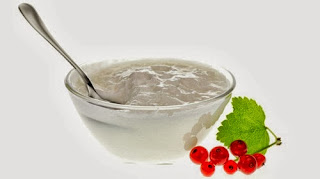The muscle spasms or cramps occur when a muscle contracts or involuntarily, which becomes rigid causing pain and discomfort. Often arise at night during sleep or during and after physical exercise. Its causes can be several, from muscle fatigue, lack of minerals and vitamins in the diet to bad postures. Besides knowing treat them properly, it is important to know some tips that can help prevent muscle cramps.
Leading a sedentary life and not doing any physical activity is one of the main causes for the occurrence of muscle cramps. In fact, people who do not exercise in your daily routine are prone to muscle spasms more frequently. That is why sport or follow a regular routine of exercise will help you prevent and also enjoy better health at all times.
Yet it is also true that muscle cramps occur regularly during or after physical exercise, which may be due to prolonged exercise or muscle overload. In this sense, there are certain practices that we can take to prevent muscle cramps in training sessions:
- Prepare the muscles of our body doing a good warming before starting the exercise, and perform stretching exercises at the end, will help prevent muscle cramps or spasms.
- Increase our exercise intensity progressively and gradually. It is also essential not to exercise the body to reach a state of maximum exhaustion.
- Avoid physical activity when temperatures are extremely high or low.
Another of the most common causes of muscle cramps is the loss of fluids and minerals from the body. Therefore, it is essential to stay well hydrated throughout the day. Do not forget to consume the recommended daily amount of water (2 liters) and, especially, hydrated with plenty of water and sports drinks to make sport and exercise.
 Watch your diet is also a key factor in preventing muscle cramps, as its recurrent appearance may be due to a lack of minerals such as potassium, magnesium or sodium in the diet. These minerals are essential to keep our muscles in good shape and regulate the distribution of water in the body.
Watch your diet is also a key factor in preventing muscle cramps, as its recurrent appearance may be due to a lack of minerals such as potassium, magnesium or sodium in the diet. These minerals are essential to keep our muscles in good shape and regulate the distribution of water in the body.Try to include in your daily diet foods rich in potassium such as bananas, legumes, green leafy vegetables and nuts, and rich in magnesium such as brown rice, soybeans, dry beans, wheat bran or oat, sunflower seeds, etc. It is also good to consume foods high in vitamins C, D and E.
At bedtime, try not to take bad posture. Remain long with poor posture may involve muscle contractions that lead to the occurrence of nocturnal muscle cramps. This condition also occurs in women who abuse the use of high heels in their day to day.
Finally, a good way to prevent muscle cramps or spasms is by performing massages muscle in those areas of the body in which we usually have. The result will be excellent if we go to a good therapist, but we can also try to make them ourselves if possible.
If we follow the above procedures we will be prevent muscle cramps or spasms problems from our daily life and enjoy a healthy life.


















